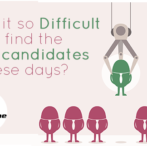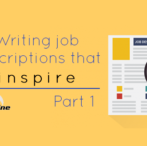Have you ever had a bad test experience when applying for a job? If so, you’re in good company.
Fact: Many hiring tests are limited in their ability to assess the right candidate and often lead to bad hiring and high turnover. This was recently the focus of an NPR story that looked at some of the new tests on the market that use big data and brain games.
From the candidate side, people become frustrated with these tests and may spread negative reviews about your company, potentially affecting your employer brand. With the current war for talent, you want to avoid this at all costs.
Where selecting a personality assessment goes wrong
Because there are no independent studies that evaluate these tools, selecting the right one is challenging. Here are the six (6) most common mistakes companies make when selecting a personality assessment:
1. Selecting an outdated tool. Many popular assessment tools are well-known because they have been around since the 1940s and 50s. Unfortunately, they have not evolved with advancements in understanding human behavior and cognition.
2. Choosing tools that use adjectives. These tools can be easily fooled. If it is easy for people to appear as they want to be seen in order to fit a job, how valuable are the assessment results? People will tend to select adjectives that are most helpful for the related job. For example, an Accounting candidate is much more likely to select “exacting” than “approximating” and a Sales candidate is much more likely to select “friendly” than “shy.”
3. Selecting tools that use “forced choice questions.” With these questions, people are given a choice of three or four words or phrases and are forced to choose the one that MOST describes them and the one that LEAST describes them. The problem is there is no way to know the size of the gap between MOST and LEAST among the assessment candidates. For example, if everyone is asked, “Do you work a lot of hours?” One person says, “No, I work 8 hours per day,” while another says, “No, I work 4 hours per day.” Another says, “No, I am unemployed.” Each person gets the same answer of “No” on the assessment, yet there is a huge gap of what “No” means in each case.
4. Choosing assessments that use True/False questions. Like “Forced Choice Questions,” you cannot determine the size of the gap between True and False. For example, each candidate answers True to the question, “I like to talk with others.” How do you distinguish between those who like to talk to everyone, those that like to talk only to people they know and those who only like to talk to people who approach them first?
5. Selecting assessments that sort people into general categories. The limitation of this is that people are more complex than this so you end up with generalized information that has limited practical value in hiring and managing people. Why settle for general information when you can have clear and specific information to that is useful and practical?
6. Choosing assessments that describe personality characteristics, but ignore thinking traits. This is a limitation of a large number of well-known assessments. How a person behaves is only half the equation. How can you make a good decision with only half of the needed information?
Choosing the right test
So, how do you choose the right test?
Use an assessment tool that asks questions based on “Likert Scales.” This presents statements describing behaviors or beliefs rather than adjective descriptions. Thus, they are much more difficult to manipulate.
“Likert Scales” also allow a wider range of choices in describing characteristics to avoid forcing people into choices that are not accurate. For example, “You like to work with caution” is the behavior or belief described and the choices available are Strongly Agree, Somewhat Agree, Neither Agree nor Disagree, Somewhat Disagree or Strongly Disagree.
Try it on current employees. Have several people in your organization take the different assessments you are considering. Rank the tests based on accuracy and ease of understanding.
Direct experience with anything in life has more value than making decisions based on marketing materials and opinions.
This article was originally published on www.tlnt.com on May 28, 2015. See article.








